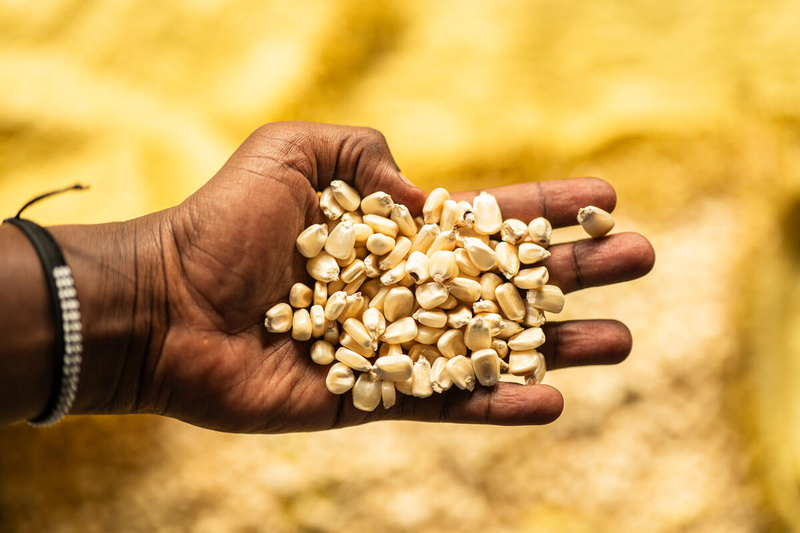Although global hunger levels have declined slightly, they remain alarmingly high. An estimated 8.2 percent of the global population, or around 673 million people, experienced hunger in 2024, which is down from 8.5 percent in 2023 and 8.7 percent in 2022. However, progress was not consistent worldwide, as hunger continued to rise in most subregions of Africa and Western Asia, according to a new report published on Monday by five United Nations agencies.

The 2025 edition of the annual report, "The State of Food Security and Nutrition in the World" (SOFI), was launched today in Addis Ababa, Ethiopia, by the Food and Agriculture Organization of the United Nations (FAO), the International Fund for Agricultural Development (IFAD), the United Nations Children’s Fund (UNICEF), the UN World Food Programme (WFP), and the World Health Organization (WHO).
The report indicates that between 638 and 720 million people experienced hunger in 2024. Based on the point estimate of 673 million, this represents a decline of 15 million from 2023 and 22 million from 2022.
"In recent years, the world has made good progress in reducing stunting and supporting exclusive breastfeeding, but there is still much to be done to relieve millions of people from the burdens of food insecurity and malnutrition," said Tedros Adhanom Ghebreyesus, WHO Director-General.
“This report provides encouraging news, but also shows where the gaps are and who is being left behind, and where we must direct our efforts to ensure that everyone has access to a healthy and nutritious diet.”
According to the report, there have been notable improvements in Southern Asia and Latin America. The prevalence of undernourishment in Asia decreased from 7.9 percent in 2022 to 6.7 percent in 2024, affecting 323 million people. Additionally, the prevalence of undernourishment in Latin America and the Caribbean fell to 5.1 percent, affecting 34 million people in 2024, down from a peak of 6.1 percent in 2020.
However, these positive trends contrast sharply with the steady rise in hunger across Africa and Western Asia, including in many countries affected by prolonged food and humanitarian crises. In 2024, the proportion of the population facing hunger in Africa surpassed 20 percent, affecting 307 million people. Meanwhile, in Western Asia, an estimated 12.7 percent of the population, or over 39 million people, experienced hunger that same year.
Moreover, according to the “Global Report on Food Crises (GRFC),” released in May, more than 295 million people in 53 countries and territories around the world were acutely food insecure in 2024, marking an increase of 14 million from 2023 and 38 million from 2022.
“Hunger remains at alarming levels, yet the funding needed to tackle it is falling. Last year, WFP reached 124 million people with lifesaving food assistance. This year, funding cuts of up to 40 percent mean that tens of millions of people will lose the vital lifeline we provide,” Cindy McCain, WFP Executive Director, said.
“While the small reduction in overall rates of food insecurity is welcome, the continued failure to provide critical aid to people in desperate need will soon wipe out these hard-won gains, sparking further instability in volatile regions of the world.”
Last year, one in twelve people globally faced hunger, showing that the world is far from eradicating hunger and food insecurity by 2030, as well as ending all forms of malnutrition by that same year.
The UN agencies warn that 512 million people could be chronically undernourished by 2030, nearly 60 percent of whom would reside in Africa, highlighting the immense challenge of achieving Sustainable Development Goal Zero Hunger.
FAO Director-General Qu Dongyu stressed the need for collaborative efforts to ensure food security for all, especially in regions where hunger is prevalent. IFAD President Alvaro Lario emphasized the importance of investing in rural and agricultural transformation to promote food security and global stability.
Catherine Russell, the Executive Director of UNICEF, highlighted the urgent need to address undernutrition among children.
“Every child deserves the chance to grow and thrive. Yet, over 190 million children under the age of five are affected by undernutrition, which can have negative consequences for their physical and mental development. This robs them of the chance to live to their fullest potential,” Russell said.
She added that the report underscores the urgent need to act for the world’s youngest and most vulnerable children, as rising food prices could exacerbate nutritional insecurity for millions of families.
“We must work in collaboration with governments, the private sector and communities themselves to ensure that vulnerable families have access to food that is affordable and with adequate nutrition for children to develop,” Russell said.
The report examined the surge in food prices from 2021 to 2023 and its impact on food security and nutrition. It attributed the surge to pandemic policy responses, the conflict in Ukraine, and extreme weather events, which led to increased global food inflation.
According to the report, this food price inflation hindered post-pandemic recovery in food security and nutrition. Low-income countries were particularly hard hit, experiencing food inflation of up to 30 percent in May 2023.
Despite rising costs, the number of people unable to afford a healthy diet decreased slightly, from 2.76 billion in 2019 to 2.60 billion in 2024. However, low-income countries experienced an increase in diet-related unaffordability.
The report recommends targeted fiscal measures to support vulnerable households, strategic investments in agriculture, and transparent monetary policies to control inflation.
Further information
Full text: The State of Food Security and Nutrition in the World 2025 (SOFI 2025), report, jointly published by the Food and Agriculture Organization of the United Nations (FAO), the International Fund for Agricultural Development (IFAD), the United Nations Children's Fund (UNICEF), the World Food Programme (WFP) and the World Health Organization (WHO), released July 28, 2025
https://doi.org/10.4060/cd6008en